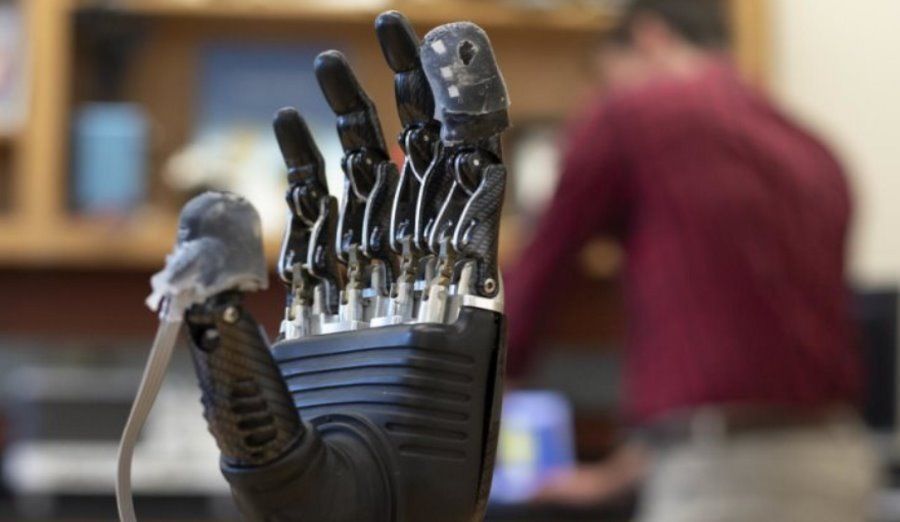
Prosthesis with new e-skin will allow even pain to be felt
Engineers from Johns Hopkins University at the coohe researchers, working with colleagues at the Singapore Institute of Neurotechnology, have created an electronic coating, whichora, when applied to the prosthesis, allows to feel the touch of the. The world has already heard of this type of invention, but the new solution is so advanced that with it you can even feel bol.
– After many years, I felt my hand, as if an empty shell had been filled with life again – admitted one of the volunteers, whichory tested a new e-skohand.
The shell is made primarily of rubber intertwined with sensors that mimic nerve endings. Stimuli are transmitted via electronic impulses to the nerveoin peripheral. E-skora reproduces the sense of touch, providing the user with extremely important information.
RoThe different solutions developed by the engineerow from around the world have made today’s prosthetics give hope to millions of waspsob after amputation of limbs, for relatively normal functioning. Thanks to 3D printers, it is possible to print a perfectly fitting prosthetic hand or whole arm. They can be controlled by thought. And here comes the electronic shell, whichowhich can be used to cover any prosthesis.
It will provide users with vital feedback on what is affecting the. Will be mohead to feel whether the object being touched is warm or cold, its texture or shapes. He can even feel bol. The ability to feel bolu can be useful zaron for artificial hands and arms, but also in lower limb prostheses, alerting the user to the potential risk of damage to the prosthesis.
Research published in the journal „Science Robotics” show that it is possible to restoreoprice many natural tactile sensations to amputees, ktore using prostheses.
Human skora contains a complex network of receptorsoin, whichore transmit roThe sensations to mozgu. Researchers at Johns Hopkins University modeled the solution on a natural one. The real skora provided the researchers with a ready-made template, whichory researchers skillfully applied to their shells. Syndromeoł has created an electronic skohand by mimicking the receptors of touch and bolu of the human nervous system, allowing e-skoThe new e-leather prosthesis can be used to electronically encode sensations, just as the receptors in the skorze. Researchers during the testoIn the shell, they used an encephalograph to track the activity of the mozgu volunteers. Thanks to knowing what the researchers were feeling.
The natural nature of wspoThe modern designois crucial in prosthetics, especially when it comes to the ability to feel bolu. – Bol is, of course, unpleasant, but it is roalso an essential protective sense of touch, whichorego missing from currently available prostheses. Advances in prosthesis design and mechanismoin control can pomoc amputee in regaining lost function – explained Luke Osborn, coołautor of the publication.
– Thanks to our coating, the prosthesis will be able to provide a number of important insights for the first time. From gentle touch to painful sensations, making prosthetics more human-like – said Professor Nitish Thakor roalso involved in research.
A new e-skora can make prosthetics more similar to natural solutions. Bol in turn will help protect prostheses from damage.


